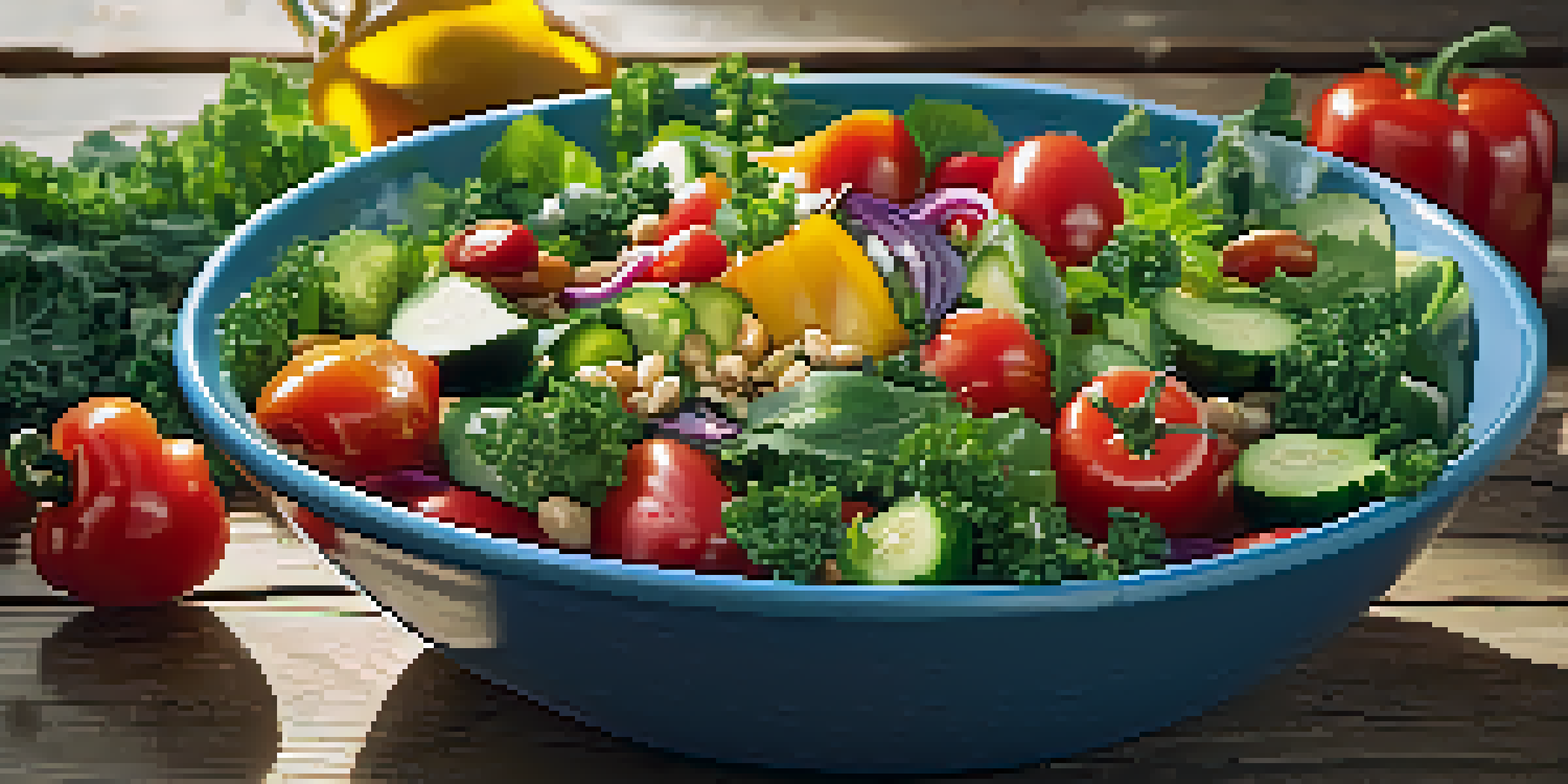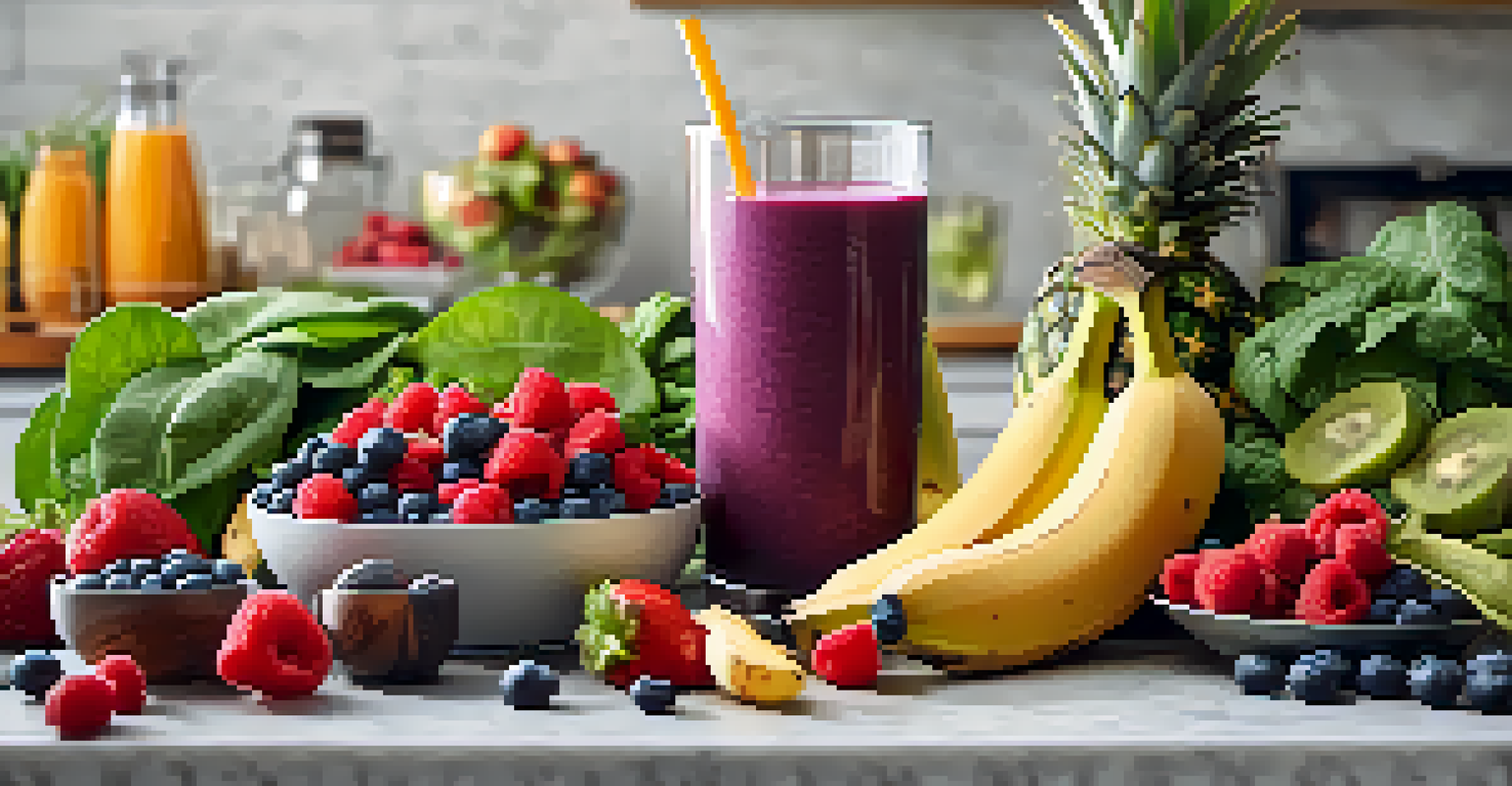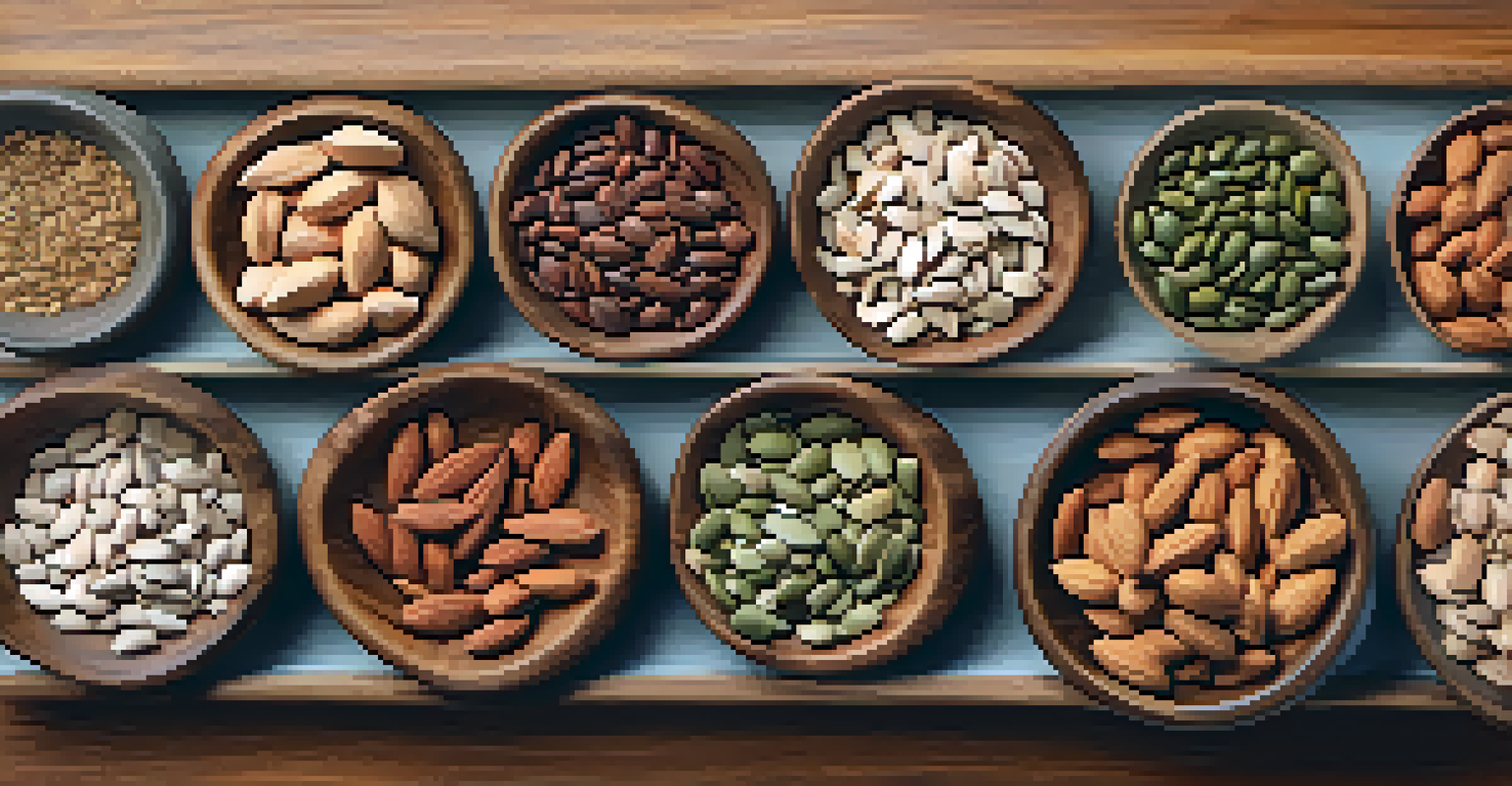Boost Your Energy Levels with Raw Foods: A Vital Guide

Understanding Raw Foods and Their Benefits
Raw foods are those that are uncooked and unprocessed, retaining their natural nutrients. This means fruits, vegetables, nuts, seeds, and sprouted grains are at the forefront of a raw food diet. When you consume these foods, you're fueling your body with enzymes and vitamins that can easily be lost during cooking.
Let food be thy medicine and medicine be thy food.
One of the main benefits of raw foods is their high water content, which helps keep you hydrated. Staying hydrated is crucial for maintaining energy levels throughout the day. Think of your body as a plant; without water, it wilts.
Moreover, raw foods are often lower in calories but high in nutrients, allowing you to eat more volume without overloading on calories. This can lead to a healthier weight and increased energy, making you feel light and vibrant.
The Science Behind Energy Levels and Food Choices
Energy levels are closely tied to what we eat. When you consume processed foods, they can cause blood sugar spikes and crashes, leaving you feeling sluggish. Conversely, raw foods have a low glycemic index, providing sustained energy without abrupt drops.

Foods rich in complex carbohydrates, like fruits and vegetables, release energy slowly, keeping you feeling full and energized longer. For example, a banana can provide a quick energy boost, while leafy greens like spinach offer a steady release.
Raw Foods Boost Energy Levels
Incorporating raw foods into your diet can provide sustained energy and help stabilize blood sugar levels.
Incorporating raw foods into your diet can help stabilize your energy levels. This means you can say goodbye to that mid-afternoon slump and hello to consistent vitality throughout the day.
Essential Raw Foods for Energy Boosting
When it comes to raw foods that energize, think of vibrant fruits and vegetables. For instance, berries are not just delicious; they’re packed with antioxidants that help fight fatigue. Similarly, citrus fruits like oranges can provide an instant pick-me-up.
Eating raw foods is the best way to nourish your body and keep your energy levels high.
Green foods, such as kale and spinach, are also excellent choices. They are rich in iron, which is crucial for transporting oxygen in your blood—essential for keeping your energy levels high. A simple kale salad can work wonders!
Don't overlook nuts and seeds, either. They are packed with healthy fats, protein, and fiber, which keep you satisfied and energized. A handful of almonds or sunflower seeds can be a great snack to keep you going.
How to Incorporate More Raw Foods into Your Diet
Incorporating raw foods into your diet doesn't have to be overwhelming. Start small by adding a raw salad to your lunch or snacking on fresh fruit instead of processed snacks. This gradual approach helps your taste buds adjust.
Consider meal prepping raw snacks for the week. Chop up vegetables and store them in the fridge for easy grab-and-go options. Pair them with hummus or guacamole for a satisfying and energy-boosting snack.
Hydration is Key for Vitality
Raw foods with high water content, along with proper hydration, are essential for maintaining energy levels.
You could also try blending a smoothie with your favorite fruits and leafy greens. This not only tastes great but also packs a nutrient punch that can supercharge your day.
The Role of Hydration in Energy Levels
Hydration plays a crucial role in maintaining energy levels, and raw foods can help you stay hydrated. Foods with high water content, such as cucumbers and watermelon, can assist in meeting your hydration needs.
Drinking enough water is essential, too. Dehydration can lead to fatigue and sluggishness, so aim to sip water throughout the day. Adding a slice of lemon or cucumber can make it more refreshing and enjoyable.
Consider herbal teas or coconut water as alternatives to plain water. These options can provide added electrolytes and nutrients, further supporting your energy levels.
Listening to Your Body’s Signals
Everyone’s body reacts differently to food, so it’s important to listen to your own signals. Pay attention to how you feel after eating raw foods versus processed options. You might find that raw foods leave you feeling lighter and more energized.
Keep a food diary to track what you eat and how it affects your energy. This can help identify patterns and make it easier to adjust your diet accordingly. You may discover which raw foods work best for you.
Listening to Your Body Matters
Being attentive to how your body reacts to raw foods versus processed options can guide you toward better energy and health.
Ultimately, trust your intuition. If you feel great after a raw meal, that's a good indicator that you’re on the right track toward boosting your energy levels.
Common Misconceptions About Raw Food Diets
One common misconception is that a raw food diet is overly restrictive or bland. In reality, there’s a world of flavors and textures available within raw foods. From zesty salads to rich nut-based dips, there's plenty to enjoy.
Another myth is that raw foods lack protein. However, many raw options, like nuts, seeds, and legumes, are rich in protein. You can create balanced meals that provide all the nutrients your body needs.

By debunking these myths, you can embrace the raw food lifestyle with confidence. It’s all about discovering new recipes and ingredients that excite your palate while boosting your energy.